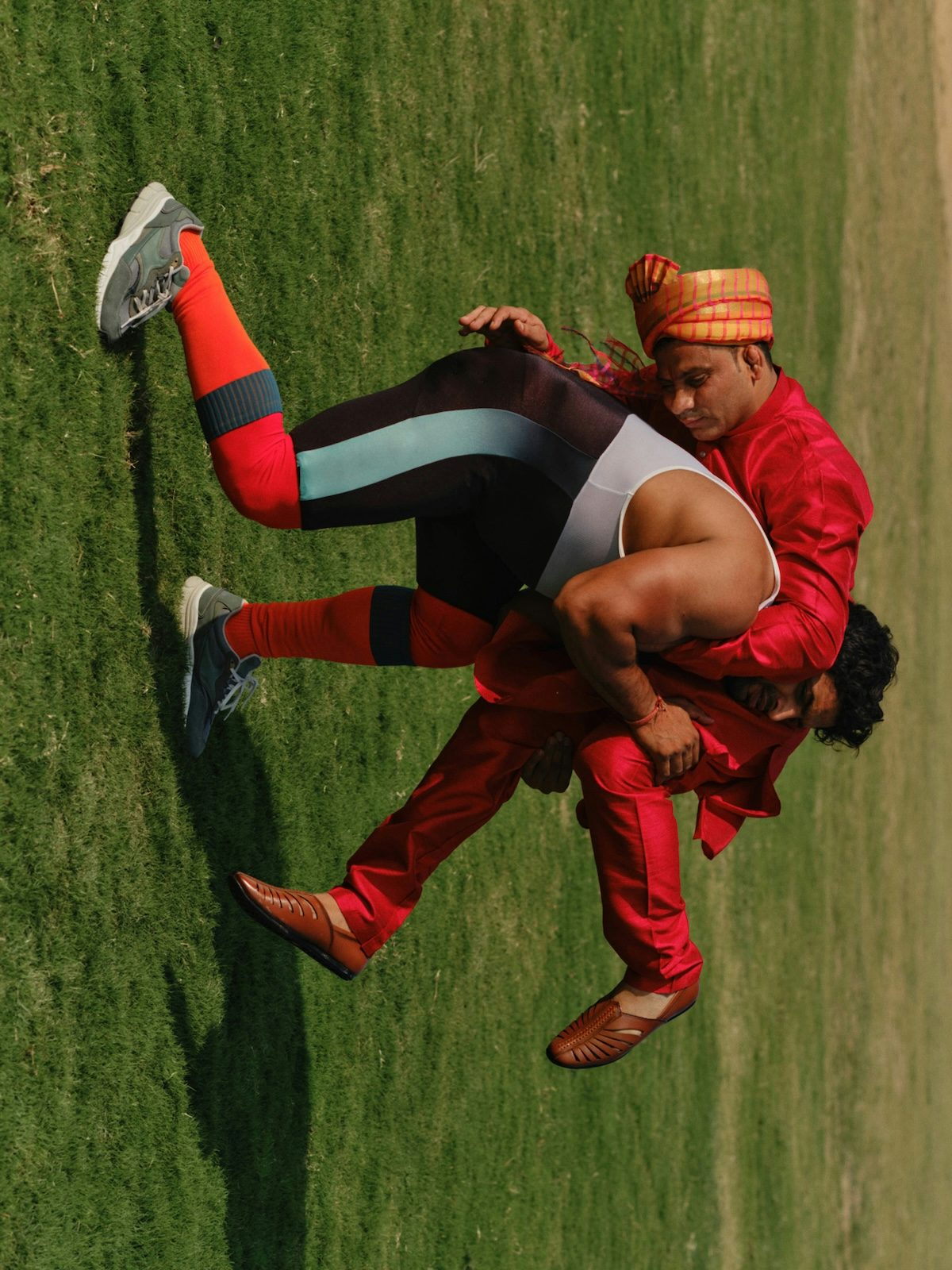Vivek Vadoliya’s debut show explores tradition and masculinity
The photographer’s first solo exhibition brings together new work made in the UK and India. Through image, he explores his British-Gujarati identity and the expectations it entails
Whether in his commissions for Financial Times and Atmos, or in his personal work exploring ancient martial arts practices, Vivek Vadoliya is known for documenting those around him through a warm, lyrical lens. His recently opened debut exhibition, & When the Seeds Fell, still largely presents images of other people, but the impulse and message behind these images are very much autobiographical.
“When my mother fell ill, I began photographing her as a way of connecting and coping. This period marked a shift in my practice, opening new questions around care, home and emotional inheritance,” Vadoliya says. “The camera became more than a tool – it became a way to understand the evolving roles within family and the fragility of self during moments of transition.”


His mother thankfully recovered, but those questions lingered, giving way to an introspective exploration of his assumed role in the family dynamic and his identity within an intergenerational, multicultural context. Following a residency in Mexico City, and drawing on travels with his father in Gujarat last year, Vadoliya put his efforts into a new body of work that explores ideas of masculinity, gender roles and tradition.
Curated by Jamie Allen Shaw in close collaboration with Vadoliya, the show at London’s 10 14 gallery opens with a moped that belongs to the artist’s father which had been stored in the family’s garage since the 1998. The bike sits on top of a rug bearing the logo of the shipping company that his family travelled with when emigrating from Gujarat via Kenya to the UK in the 1970s, Allen Shaw explains, evoking the physical as well as psychic journey that Vadoliya’s father went on.
The rest of the exhibition encompasses a mix of new images and new arrangements of old images. Across many of them, there is a push and pull that plays out across places and bodies, between cohesion and tension.


Photographs are often twinned in diptychs, sometimes to draw a link and other times a contrast, as seen in his environmental images of the UK and India – or his photographs featuring groups of schoolboys and schoolgirls in his father’s home village in India.
This duality carries through to individual works, such as a still-life of 50/50 sliced bread, or an image of two men locked together in a position that suggests combat as much as it does an embrace.

A large part of the space is handed over to Tapestry of Tapes, an assemblage of still frames drawn from old family videotapes, stemming from the fact his father often had a video camera in hand. Small sequences are interspersed with gaps like fragments of memory. Clips also play out in a looping video work displayed on a phone. These archival materials are both deeply personal and somehow universal; it’s difficult not to think back to your own versions of these moments.
The photographer will expand on the themes in his work during a conversation with Kalpesh Lathigra and Nina Manandhar, chaired by CR contributor Gem Fletcher, at the gallery on August 6.

& When the Seeds Fell is on display at 10 14 Gallery, London until August 8; vivekvadoliya.com










